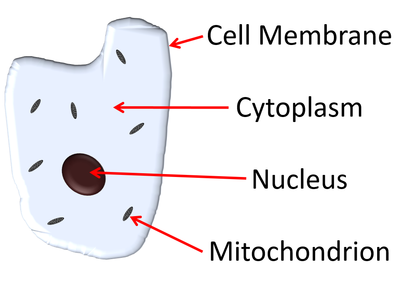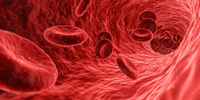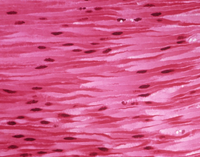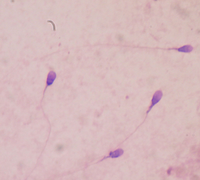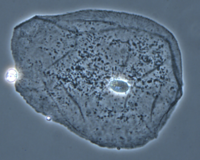Difference between revisions of "Animal Cell"
(Tags: Mobile edit, Mobile web edit) |
(→Key Stage 4) |
||
| Line 80: | Line 80: | ||
| style="height:20px; width:200px; text-align:center;" |A cheek [[Cell (Biology)|cell]]. | | style="height:20px; width:200px; text-align:center;" |A cheek [[Cell (Biology)|cell]]. | ||
|} | |} | ||
| + | |||
| + | ===References=== | ||
| + | ====AQA==== | ||
| + | :[https://www.amazon.co.uk/gp/product/1782946381/ref=as_li_tl?ie=UTF8&camp=1634&creative=6738&creativeASIN=1782946381&linkCode=as2&tag=nrjc-21&linkId=5ec5fc3f6429e30c1d9ab9bca2bccf93 ''Animal cells, page 23, GCSE Combined Science Trilogy; Biology, CGP, AQA'] | ||
| + | :[https://www.amazon.co.uk/gp/product/0008158754/ref=as_li_tl?ie=UTF8&camp=1634&creative=6738&creativeASIN=0008158754&linkCode=as2&tag=nrjc-21&linkId=27ad53b0283feeff7fc5ae04a9e205f37 ''Animal cell, pages 22, 34-5, GCSE Biology; Student Book, Collins, AQA'] | ||
| + | :[https://www.amazon.co.uk/gp/product/1782945563/ref=as_li_tl?ie=UTF8&camp=1634&creative=6738&creativeASIN=1782945563&linkCode=as2&tag=nrjc-21&linkId=9a1d023a374038e6072f33c4f3cf808b ''Animal cells, page 11, GCSE Biology; The Revision Guide, CGP, AQA'] | ||
| + | :[https://www.amazon.co.uk/gp/product/1782945598/ref=as_li_tl?ie=UTF8&camp=1634&creative=6738&creativeASIN=1782945598&linkCode=as2&tag=nrjc-21&linkId=ad276ad49df77ab4b40ab4fd0fe09682 ''Animal cells, page 11, GCSE Combined Science; The Revision Guide, CGP, AQA'] | ||
| + | :[https://www.amazon.co.uk/gp/product/1782945954/ref=as_li_tl?ie=UTF8&camp=1634&creative=6738&creativeASIN=1782945954&linkCode=as2&tag=nrjc-21&linkId=100574c08fbbb64318256eb79ed61a76 ''Animal cells, page 23, GCSE Biology, CGP, AQA'] | ||
| + | :[https://www.amazon.co.uk/gp/product/0198359373/ref=as_li_tl?ie=UTF8&camp=1634&creative=6738&creativeASIN=0198359373&linkCode=as2&tag=nrjc-21&linkId=952a73bbb09d222ecc4b50d200679849 ''Animal cells, pages 6, 10-11, 15, 23, 28, 30-33, GCSE Biology; Third Edition, Oxford University Press, AQA'] | ||
Revision as of 18:29, 27 October 2019
Contents
Key Stage 3
Meaning
An animal cell is a cell that has a cell membrane, cytoplasm, mitochondria and a nucleus.
About Animal Cells
- Animal cells do not have chloroplasts, a cell wall or a permanent vacuole.
| A diagram of a typical animal cell. |
- There are several specialised animal cells found in humans that you should know:
Examples
| Red Blood Cells | Muscle Cells |
| Sperm Cells. | A cheek cell. |
Key Stage 4
Meaning
An animal cell is a eukaryotic cell that has a cell membrane, cytoplasm, mitochondria and a nucleus but no cell wall.
About Animal Cells
- As a eukaryotic cell an animal cell contains membrane bound organelles, including a nucleus and several mitochondria.
- Animal cells can be distinguished from plant cells in that they do not have chloroplasts, a cell wall or a permanent vacuole.
| A diagram of a typical animal cell. |
- There are several specialised animal cells found in humans that you should know:
Examples
| Red Blood Cells | Muscle Cells |
| Sperm Cells. | A cheek cell. |
References
AQA
- Animal cells, page 23, GCSE Combined Science Trilogy; Biology, CGP, AQA'
- Animal cell, pages 22, 34-5, GCSE Biology; Student Book, Collins, AQA'
- Animal cells, page 11, GCSE Biology; The Revision Guide, CGP, AQA'
- Animal cells, page 11, GCSE Combined Science; The Revision Guide, CGP, AQA'
- Animal cells, page 23, GCSE Biology, CGP, AQA'
- Animal cells, pages 6, 10-11, 15, 23, 28, 30-33, GCSE Biology; Third Edition, Oxford University Press, AQA'
